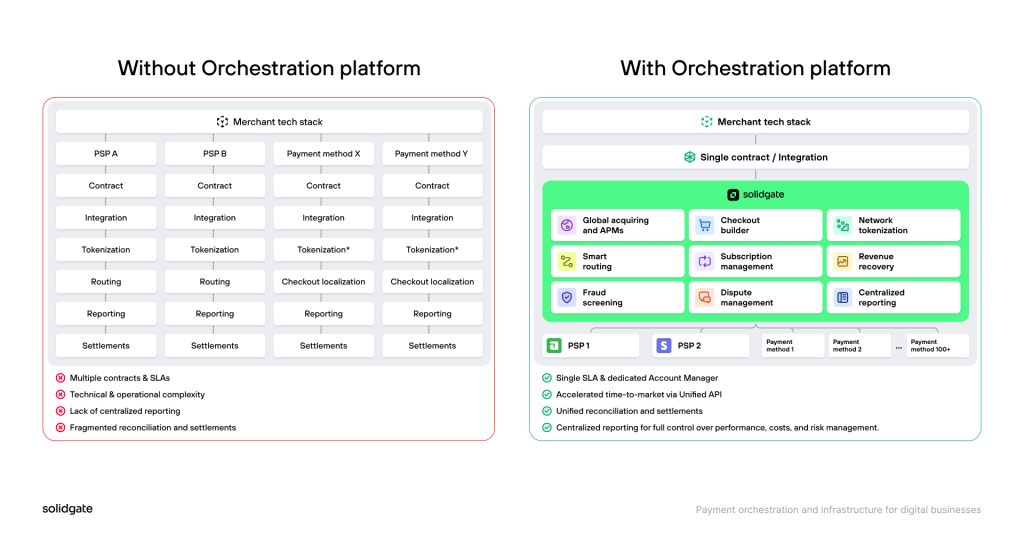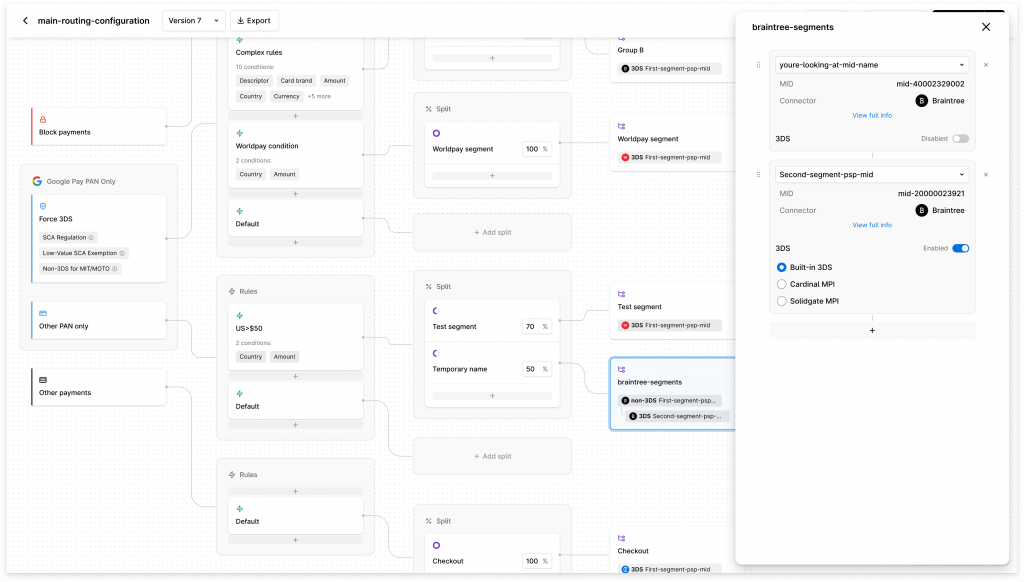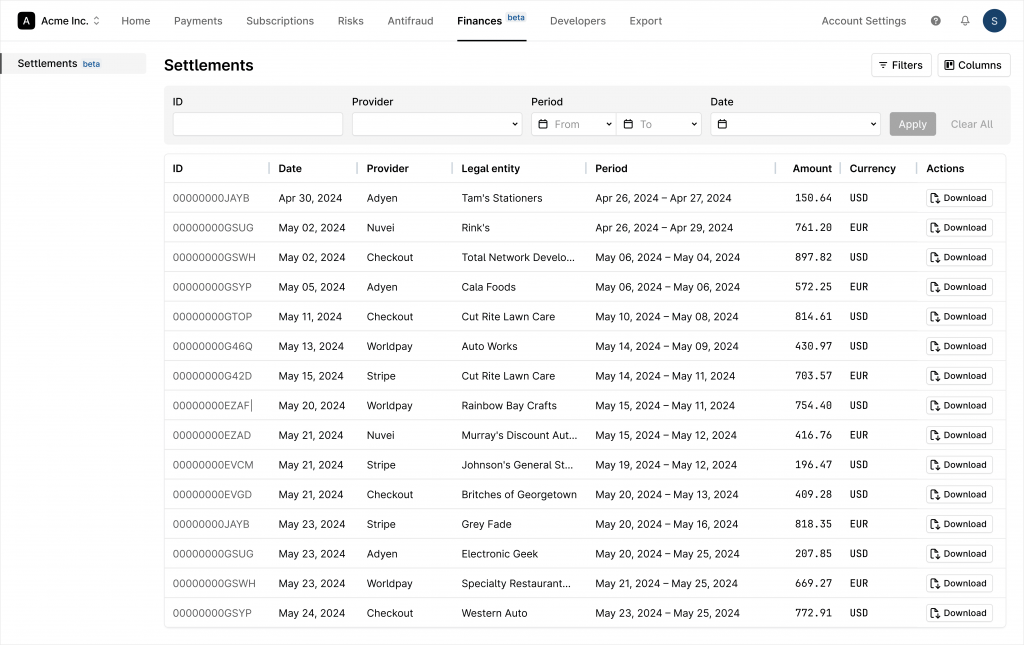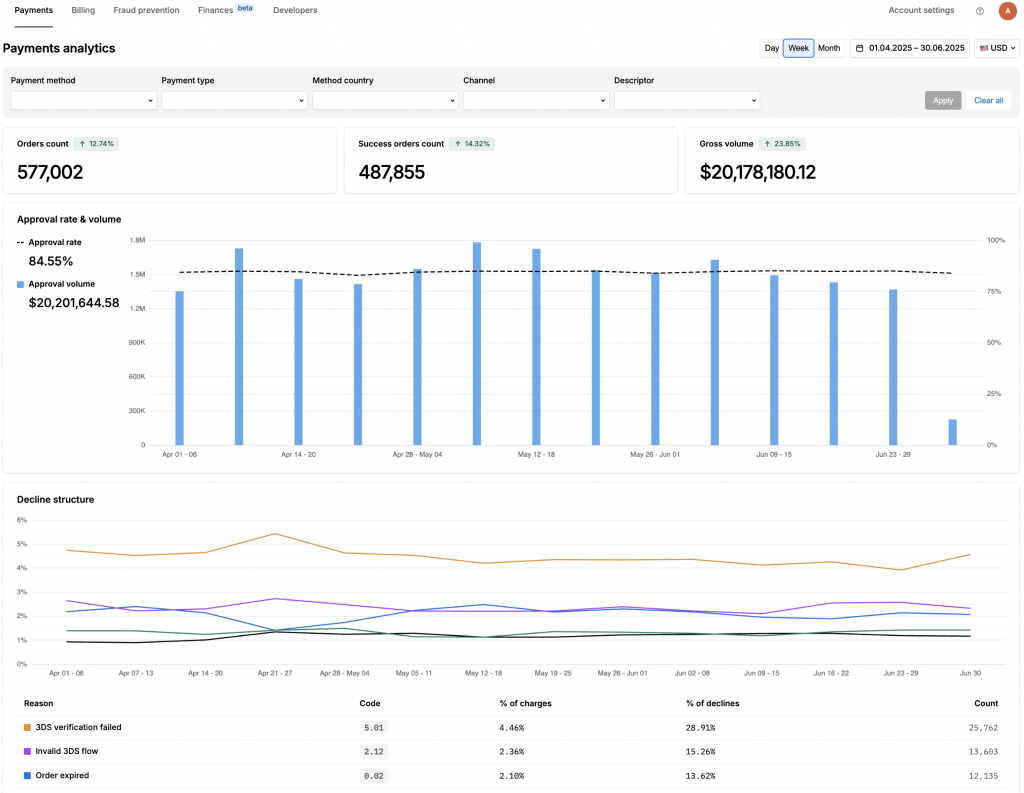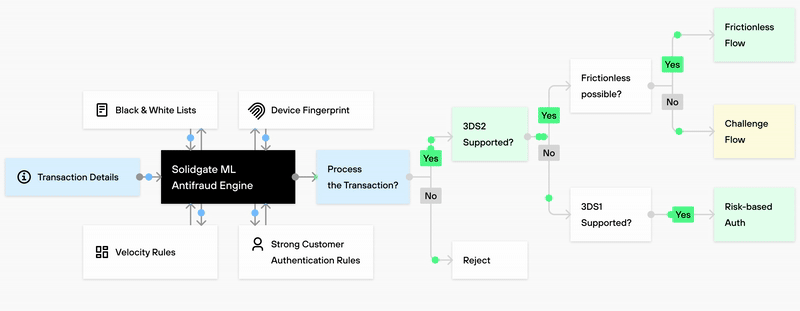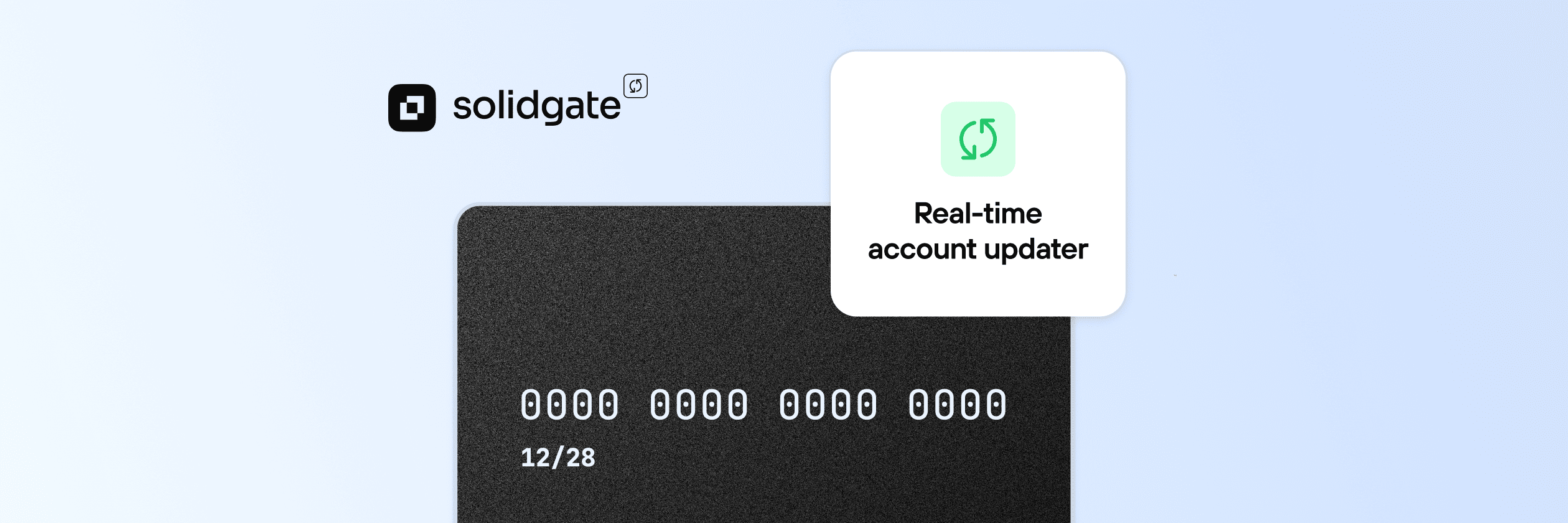Imagine this: you’re the CPO of a growing online business. You start eyeing new international markets – say, Brazil. Your current payment provider doesn’t support PIX, the most common payment method on the market, and by the time they do, your competitors will already have established a foothold.
Developing your independent integration with PIX presents its own set of challenges, with sourcing a team for integration and maintenance being the biggest one.
Meanwhile, your team is trying to launch a new checkout flow, but your PSP doesn’t offer the flexibility you need. Your authorization rates in several regions could use a boost, and your processing fees are eating up 2.5% of your $150M ARR.
That’s when most companies we work with at Solidgate start thinking about ways to optimize their payment stack.
In this article, we’ll break down how payment orchestration platforms (POPs) solve these problems, and why it has become the technology of choice for most high-growth digital merchants.
Table of Contents
The challenges of scaling your payment stack
Most teams realize the limitations of the one payment provider strategy once they hit a certain revenue metric and start looking to expand into new geographies. That’s when the following things become apparent:
You don’t have control over payment performance and cost
Once your revenue reaches $100 million in a year, any decline in approval rates becomes more visible on your balance sheets. A mere 10% difference in approvals between cards in France and the Netherlands can mean millions of dollars in lost revenue.
The same goes for processing fees. With one provider, it’s harder to renegotiate better fees or route payments to the most cost-effective acquirer. Since most PSPs lack the tools for real-time payment routing decisions, companies have limited control over their payment performance and costs across different regions.
Local payment methods are limited by your PSP
Let’s say you decided to expand to Poland. You need BLIK, the most used payment method on the market. However, your PSP doesn’t happen to support it and says the integration is planned for the end of next year.
You have two options: to wait and lose a share of the market to competitors who happen to offer BLIK, or to build and maintain a new integration yourself. Building and maintaining multiple PSP integrations, however, requires thousands of developer hours per integration, pulling significant resources from your core product. As you scale, you’re faced with multiple integration and maintenance projects for each new gateway or payment method.
Reconciliation can be a nightmare
Payment providers come with different reporting formats, settlement schedules, and fee structures. Your finance team has to spend hours or even days matching records, tracking payments, verifying transactions, and balancing books.
Manually reconciling payments across multiple gateways is also prone to error. The operational overhead becomes so great that your team spends more time fixing mistakes than analyzing payments for optimization.
Fragmentation kills scalability
Scaling to new markets inevitably comes with scaling your payment stack. Whether it’s to offer customers preferred payment methods, route payments to the best and most cost-effective local acquirer, or be able to rescue failed transactions with fallbacks and smart retries, it involves scaling our infrastructure.
But as your payment infrastructure grows, it becomes more fragmented, rigid, and fragile. The more fragmented it becomes, the more resources it requires to manage.
At this point, your options are either to build and maintain your own orchestration engine (which is a tall ask for companies in an active growth phase) or outsource the heavy lifting to a payment orchestration platform.
What is a Payment Orchestration Platform?
Payment orchestration platforms allow you to easily add new providers and methods and manage how payments are routed, retried, and reported across the entire stack. They create a single integration point that acts as the layer above payment providers, allowing companies to manage and optimize payment flows across all providers and methods from one place.
Core features of Payment Orchestration Platforms
Modern orchestrators offer businesses several core capabilities that distinguish them from simple payment gateways:
- Multi-gateway connectivity: Links to dozens of payment providers through standardized APIs
- Smart routing logic: allows selecting the best payment provider based on real-time conditions like country, card brand, BIN, amount, past performance, currency, and more
- Failover protection: If one PSP is down or a transaction fails, the orchestrator reroutes through an alternative, minimizing declines
- Real-Time Monitoring & Analytics: Provides visibility into payment performance across gateways
- Automated compliance management handles PCI DSS, regional regulations, and data protection requirements
- Centralized reconciliation simplifies financial reporting across multiple payment channels
Most payment orchestration platforms, however, have evolved beyond those core features, with many offering services like network tokenization, subscription engine, dispute representment, universal checkout, tax compliance, and more. Th
The value-add offerings often vary, as orchestrators add them at their merchants’ request and specific pain point they need to solve – at least, that’s how we do it at Solidgate.
Find out if your business needs a payment orchestration platform: reach out to our team to learn more.
Why businesses partner with payment orchestration platforms
Payment orchestration enables you to create a composable payment stack and provides the flexibility and cost efficiency that isn’t achievable otherwise. It, in turn, leads to clear bottom-line benefits:
Speed up time-to-market with access to 200+ payment providers and methods
Entering a new geography requires speed and resources. The faster you can offer localized checkout with preferred payment methods in the target region, and the fewer resources you have to invest in it every time, the better you are positioned for growth.
Payment orchestration platforms allow you to integrate only once and gain access to:
- Different payment service providers like Stripe, PayPal, Adyen, Braintree, Worldpay, Checkout, and more
- Various payment methods like credit card payments, digital wallets, real-time payments, Buy Now, Pay Later, and bank transfers
- Local APMs like PIX, BLIK, CashApp, AliPay, iDEAL, and more
You gain access to Tier-1 acquirers in different regions and can offer localized payment experiences in target markets in a matter of days or weeks instead of months. You can also easily swap out gateways and test new payment methods with little to no developmental overhead.
Reduce payment processing costs
With multiple connections, orchestration platforms can route transactions in a way that minimizes processing fees and interchange. For example, domestic transactions can be sent to local acquirers that offer lower rates for local cards (e.g., 1.2% instead of an international provider at 2%+).
High-value transactions could be directed to providers with volume-based discounts or better rates for premium cards, etc. You effectively can “shop around” behind the scenes for the best processing deal on each payment. Over millions of transactions, these savings are substantial.
Increase approval rates (and revenue) by optimizing payment routes
By connecting to multiple acquiring banks and processors, an orchestration layer can send a transaction to the processor that has the highest approval rate for that card type or region.
It might route a German customer’s Visa transaction to a local German acquirer for a better chance of approval and lower fees, while sending an Italian customer’s Visa to a different provider known for higher success in Italy.
If a transaction is declined by one processor, the system can automatically retry via an alternate route (cascade) to save the sale. This intelligent routing happens invisibly and immediately boosts revenue: our merchants often report an immediate 2–4% increase in authorization rates after implementing orchestration.
Payment routing in Solidgate HUB.
Over time, companies can achieve a 5-10% improvement in acceptance rates. On $200M in annual volume, however, even a modest 2% lift means ~$4M more sales approved instead of lost; a 4% lift means ~$8M recovered revenue.
Simplify back-office with centralized payment reconciliation
Settlement reconciliation doesn’t scale well without automation and centralization. Reconciling all the fragmented payouts and settlements becomes a huge operational blocker when you’ve got multiple payment methods, various settlement schedules, and different reporting formats.
Most orchestration platforms consolidate payouts and settlements from all providers in a single interface, simplifying reconciliation workflows for your teams.
For your finance and support teams, it’s much easier to track “Order X” through one platform than logging into five different merchant portals to piece together what commissions each provider charged you, and what your cash flow looks like.
Financial Reporting section in Solidgate HUB
Plus, things like currency conversion, tax calculation, and regulatory compliance across all the providers become centralized functions managed through the orchestration layer.
Analyze and optimize payment performance of each provider
Orchestration platforms give you full visibility into your payment data across providers, helping you create a tailored payment strategy and providing control over acceptance rates and processing costs:
- Track key metrics like approval rates, decline reasons, chargebacks, and fee structures by provider, region, or method
- Run A/B tests on payment routing logic and monitor the impact
- Identify underperforming providers or high-performing local methods
- Analyze how changes like enabling 3DS, adding a new PSP, or adjusting retry logic affect outcomes
Payment analytics dashboard in Solidgate HUB
Reduce fraud without compromising approval rates
Orchestration providers like Solidgate integrate fraud detection engines, adaptive 3-D Secure authentication flows, chargeback prevention, and risk scoring. This allows you to protect your revenue and reputation while still approving as many legitimate transactions as possible.
For you, this means fewer manual checks, fewer chargebacks, and more confidence in every payment. You can automatically apply 3DS verification when necessary, or skip it when you’ve got trusted customers. And, with fraud detection built in, any suspicious transactions get flagged for review before they go through.
Plus, by tokenizing card data and using secure vaults, you can lower your PCI DSS scope. Sensitive card information stays locked up securely by the platform, not scattered across your systems, reducing the risk of a breach.
Dynamic fraud protection
Understanding the ROI of Payment Orchestration
Let’s put some numbers behind the orchestration story.
A digital education platform based in Europe, processing $320 million annually, was running into classic scaling challenges.
Their authorization rates looked solid in the US at 87%, but dropped to 74% across key emerging markets. Payment processing costs averaged 2.8% of every transaction, and chargebacks hovered around 0.7%. The operations team was spending over 30 hours a month just on reconciliation, while payments-related customer support tickets climbed 35% year-over-year.
The first step was to route Latin American transactions to local providers. In Brazil, that meant turning on native support for PIX. For the US and Europe, fallback logic ensured that peak periods didn’t mean failed payments.
Within 60 days, authorization rates in Brazil increased from 74% to 85%. The team was able to recover significant revenue that would have otherwise been lost to failed or abandoned checkouts, while the hours spent on reconciliation were cut in half.
Next, they layered on adaptive fraud management. High-risk cards were routed to a dedicated fraud platform, while trusted customers enjoyed frictionless one-click checkouts. Chargebacks dropped from 0.7% to 0.48%, and support tickets related to payments shrank by 21%. The company was able to recover more revenue that used to be lost to false declines.
Six months in, they rolled out network tokenization for all card-on-file transactions. Subscription renewals benefited immediately: declines from expired or updated cards dropped by 18%, and overall revenue recovery continued to improve.
At this point, the combination of higher approval rates, smarter fraud prevention, and tokenization meant the company was saving and recovering hundreds of thousands in revenue and costs each month.
With the total cost of implementing orchestration, including platform fees, integrations, and added services, fully recouped within the first several months, the business saw a clear return on investment in its first year.
When partnering with a Payment Orchestration Platform makes sense
Not every company will benefit equally from adding an orchestration layer. Orchestration platforms like Solidgate bring the most value for companies with very specific characteristics and challenges:
Look at your transaction volumes
Generally, the higher your payment volume, the more there is to gain from even small percentage improvements. Enterprises processing over $100 million annually almost always benefit from orchestration, as a single percentage point improvement represents millions in saved revenue.
Below that, the complexity might outweigh the gains; many SMBs can stick with Stripe/Adyen until they scale more.
Determine your geographic diversity and expansion appetites
If a company aims to sell globally, the need for localized payment methods and local acquiring increases. When you need to deal with varied local payment preferences, regulatory requirements, and acquirer performance, the value of orchestration becomes clear.
Assess your business model complexity
Certain business models inherently need more payment flexibility. Marketplaces that split payments among multiple parties, CSS services fighting involuntary churn, and on-demand platforms dealing with stored credentials often push the limits of out-of-the-box PSP features.
If your business model requires advanced payment logic (split payments, recurring with retries, etc.), an orchestration layer provides the toolkit to build those flows.
If you think your business might be a good fit for a payment orchestration platform, reach out to our team. We’ll be happy to discuss bespoke solutions for your needs.
FAQ
How do payment orchestration platforms increase payment system flexibility?
Payment orchestration platforms give you the freedom to quickly adjust your payment setup as your business grows. Instead of dealing with the headache of managing separate integrations for every new payment provider or method, you can connect to everything through a single API. This means you can easily swap out gateways, test new payment methods, or adapt to new market trends — all without needing a major dev project every time.
How can businesses improve payment success rates with payment orchestration?
Payment orchestration lets businesses boost approval rates by sending transactions through the best payment route in real time. If a transaction gets declined, the system automatically reroutes it to a backup provider to save the sale. Plus, it includes smart retry logic that gives failed transactions a second chance. This means fewer lost payments and more completed transactions, helping you recover sales that would have slipped through the cracks.
In what ways can payment orchestration platforms help businesses expand internationally?
When you’re expanding globally, managing payments across different regions and currencies can be a nightmare. Orchestration platforms make it easy by connecting you to local payment providers, handling compliance, and giving you access to region-specific payment methods, like PIX in Brazil or Alipay in China. Instead of building separate payment systems for each market, you get everything streamlined into one system, making global expansion quicker and smoother.


